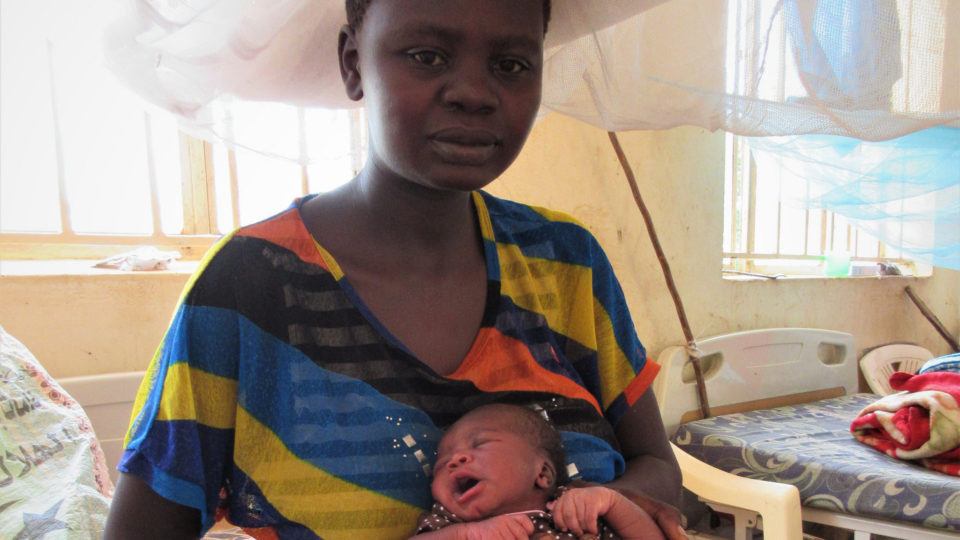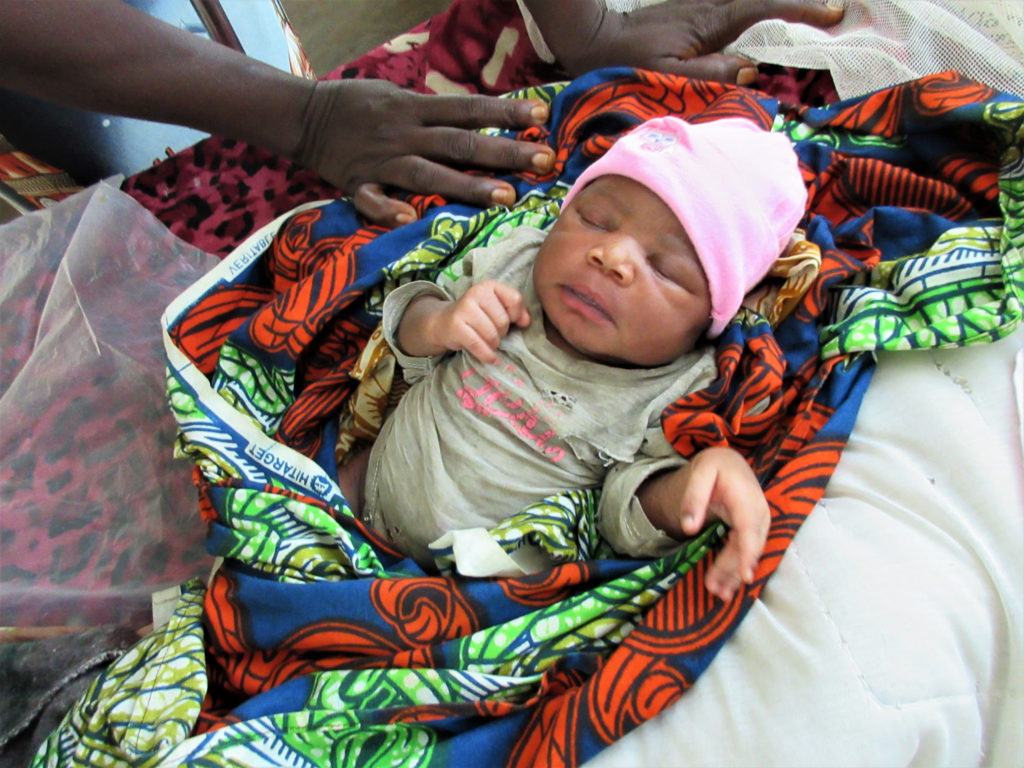It Takes a Community to Save a Mother

In this very raw and emotional piece, Aurora Fellow and nurse-midwife, Sarah Rubino, shares about how giving life can be one of the most dangerous experiences of a woman’s life, especially in places like South Sudan.
Gushing blood. It was a sound I had been warned about. Back in nurse-midwifery school, one of our instructors told us about that moment of dread. It was the sound of constant flowing blood after the birth of the baby, and an indication that the mother was experiencing postpartum hemorrhaging. I had never encountered it before, only mild cases where we used drugs more as a preventative measure than for stopping an active postpartum hemorrhage.
A young girl named Nevar lay on the delivery table as I walked into the maternity ward. I was just there to check on some patients before heading home for the evening. Nevar had come to the clinic in labor around 30 minutes before my arrival and was now 9 centimeters dilated. It was her first baby, so the midwife on duty and I knew that the birth was likely to take time. I began preparing for the birth, setting out the small birth kit and filling a syringe with 10 units of oxytocin (a medication that makes the uterus contract to help prevent blood loss after the birth). I checked the neonatal bag and mask, and put on my birth galoshes, long waterproof apron, and my cap to keep my hair out of my face. As I readied everything, the young mother turned side to side on the birthing table as a way to help with the labor pains and also to move the baby into the perfect position. Finally, about 30 minutes after my arrival, Nevar was at 10 cm and ready to push.
Nevar rocked her baby’s head out further and further with each contraction. In about twenty-five minutes, the little head emerged and right after, out shot the body. The little 3.3 kg baby started crying immediately; the new mother delivered a healthy baby girl. I then started a protocol that proactively prevents excessive blood loss. This protocol is done at every birth here because of the scarcity of resources to manage a severe postpartum hemorrhage. There is no blood supply for an emergency blood transfusion, we have only two medications to help stop the bleeding of a postpartum hemorrhage, and sometimes (like the day Nevar’s baby was born) the doctor is at least 45 minutes away working at another clinic. Immediately, I injected the oxytocin in Nevar’s thigh. Then, I applied cord traction while guarding the uterus until the birth of the placenta. Lastly, I massaged the uterus until it was firm. Up to this point, everything had gone smoothly during the labor and birth, and Nevar had only lost 200 mL of blood. It was a normal labor and birth and a classic example of how you should never let your guard down when helping bring a baby into the world.
Then I heard the sound. It started out as a steady trickle of blood splashing against the cold metal bucket. Instantly, I was on guard; I knew a little blood like this was okay, but when the trickle of blood is continuous, the amount of blood the mother loses adds up fast. I massaged her uterus again and noticed it had relaxed, no longer a hard mass. The placenta was delivered completely intact so there weren’t any fragments to cause the uterus to relax. Signs, symptoms, deductions, and diagnoses ran through my mind in the span of several seconds. I had to check to see why she was bleeding like this.
I told the midwife to start an IV drip of oxytocin and started my examination. Putting one hand on the lower part of her belly and the other in her cervix, I cupped her uterus, trying to feel for any problem. Out came a giant blood clot the size of my fist. It had blocked her cervix and the blood that had built up behind it started pouring out, quickly filling the metal vessel. I told the midwife to give another dose of medication under the mother’s tongue after she started the oxytocin infusion. In moments, 200mL of blood loss turned to 400mL, then 550mL. I grabbed her cervix with one hand as my other hand pushed on her uterus in a last-ditch effort to stop the bleeding.
The sun had started to set, filling the light-less birth room with shadows. We had used all the medication we could give her. Nevar was a young first-time mother, holding her daughter in her arms as life poured out of her.
I stood there, her uterus pressed tight between my hands, praying to God to spare her life.
I felt her uterus start to firm up slowly, then harden as the gush of blood ceased. In a span of seven minutes from the birth of her daughter, Nevar had lost well over 750 mL of blood. All of our efforts were not in vain, however; Nevar was alive.
The next day, I visited Nevar and her daughter. I saw that both were doing well despite yesterday’s brush with death. Nevar, beaming, showed me her daughter in her new little outfit. With a grin, the grandmother then told me, in English, what they had named the newborn girl. I couldn’t hold back my honor and joy – they had named her Sarah.
Many would say, “You helped save this young mother’s life!” But, I would say we all saved Nevar’s life. Without all of the support of CMMB’s amazing donors that help to provide medications and supplies, without those who supported me and my husband to come to Nzara, without my teachers from grade school up to my master’s program teaching me all I know, without my wonderful preceptor and those working with her to train me to become a skilled nurse-midwife, Nevar would not be alive today.
From Nevar, her daughter, and me – thank you!

